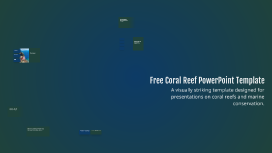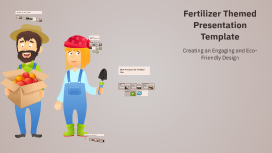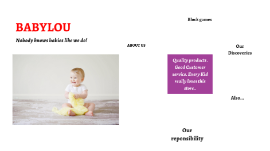Gingerbread Themed Presentation Template
Transcript: Gingerbread Themed Presentation Template A creative and festive template designed specifically for gingerbread-themed presentations. History of Gingerbread Tracing the evolution of gingerbread from ancient times to modern treats. 18th Century Modern Times Ancient Times Gingerbread began to flourish in Europe, often enjoyed during festive occasions and celebrated in various forms. Today, gingerbread is a beloved holiday tradition, with diverse recipes and creative uses around the world. Gingerbread originated with the Greeks and Romans, who created early forms of the recipe using honey and spices. 15th Century The first documented recipe for gingerbread was recorded, marking a significant point in its culinary history. Conclusion and Takeaways Summarizing the significance and impact of gingerbread during the holiday season. Historical Significance Creative Expressions Cultural Impact Gingerbread has a long-standing history that dates back to ancient civilizations, symbolizing tradition and cultural heritage. Gingerbread serves as a medium for creativity, allowing people to craft beautiful decorations, gifts, and artistic sculptures. Gingerbread is embedded in various cultural narratives, making appearances in fairy tales and movies, enriching holiday traditions. Innovative Applications of Gingerbread Gingerbread transcends its role as merely a festive treat; it serves as a versatile medium for creativity. Its applications range from delightful decorations and unique holiday gifts to intricate art forms. Enthusiasts often engage in crafting gingerbread sculptures and elaborate dioramas, showcasing ingenuity and festive spirit. The Essence of the Christmas Party The Christmas party serves as a joyful celebration, uniting friends and family in the spirit of the season. It features festive decorations, delicious food, and a variety of holiday-themed activities that embrace the warmth and joy of Christmas. Classic Gingerbread Cookies Classic gingerbread cookies are often cut into festive shapes and decorated with icing and sprinkles. They are a popular choice for holiday baking, representing the essence of Christmas. Soft Gingerbread Cake Delicious Gingerbread Recipes and Variations Soft gingerbread cake is a moist and flavorful dessert, often spiced with cinnamon, nutmeg, and cloves. It's typically served warm, sometimes with a dollop of whipped cream or a dusting of powdered sugar. Gingerbread Men Gingerbread men are iconic holiday treats, often decorated with colorful icing and candies. They are a fun baking project for families and are frequently used in holiday traditions and decorations. Traditional Gingerbread Houses Modern Gingerbread Houses Gingerbread in Fairy Tales Traditional gingerbread houses typically feature cozy cottage designs with classic elements such as thatched roofs, windows with frosting, and candy embellishments. These designs evoke nostalgia and are often inspired by fairy tales. Modern gingerbread houses incorporate contemporary architectural styles, often featuring sleek lines, open spaces, and unique color palettes. They may include elements like edible LED lights or innovative candy structures, reflecting current design trends. Gingerbread appears in numerous fairy tales, most notably in the story of Hansel and Gretel, where a house made of gingerbread attracts the children. This narrative highlights the whimsical nature and allure of gingerbread, cementing its place in literary tradition. Gingerbread in Movies Gingerbread's Cultural Impact In popular movies, gingerbread is often depicted as a festive treat, including animated films that feature gingerbread characters in comical or heroic roles. These portrayals contribute to the festive spirit and enjoyment associated with gingerbread during the holiday season. The Iconic Gingerbread Man The gingerbread man has become an iconic symbol of Christmas and is often used in decorations, cookies, and holiday crafts. This character represents the fun and creativity associated with gingerbread, appealing to both children and adults alike.

















